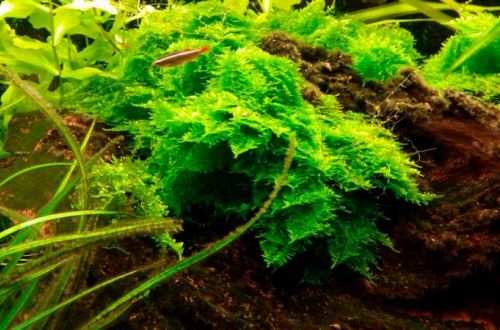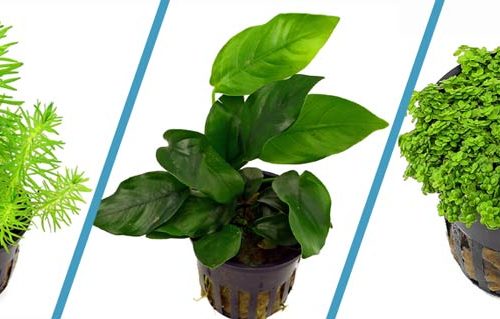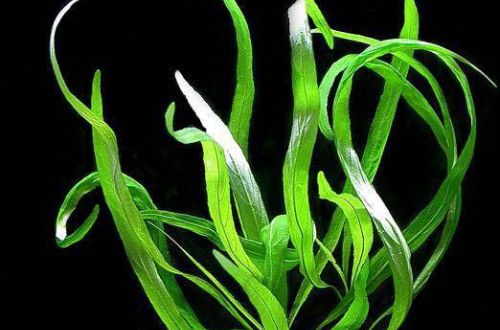
Buterlak is two-stamen
Didiplis or Buterlak two-stamen, scientific name Didiplis diandra. It comes from the eastern states of the USA, where it grows along the banks of ponds, lakes, backwaters of rivers. It is included in the list of plants that are on the verge of extinction. When in favorable conditions, it forms pinkish thickets, contrasting favorably against the background of green plants, which is appreciated in professional aquascaping.
Fairly easy to maintain, but there are a few nuances that must be taken into account. Didipsis needs a good level of lighting, with a lack of light, the lower leaves die off quickly. In turn, in bright light, the plant begins to intensively consume trace elements contained in the soil. In this case, it is imperative to provide a nutrient substrate rich in nitrites, phosphates, potassium and iron. It is the latter element that gives pinkish or orange tints to the leaves, and if they turn pale, this is a clear sign of iron deficiency. Additional introduction of carbon dioxide is not required, but welcomed.
It propagates with the help of side shoots, if they are not thinned out, a dense planting is obtained. The stimulus for the formation of shoots is the cutting of the crown of the plant. Each shoot can be separated from the mother plant and planted separately.





